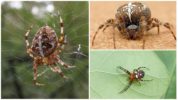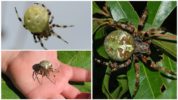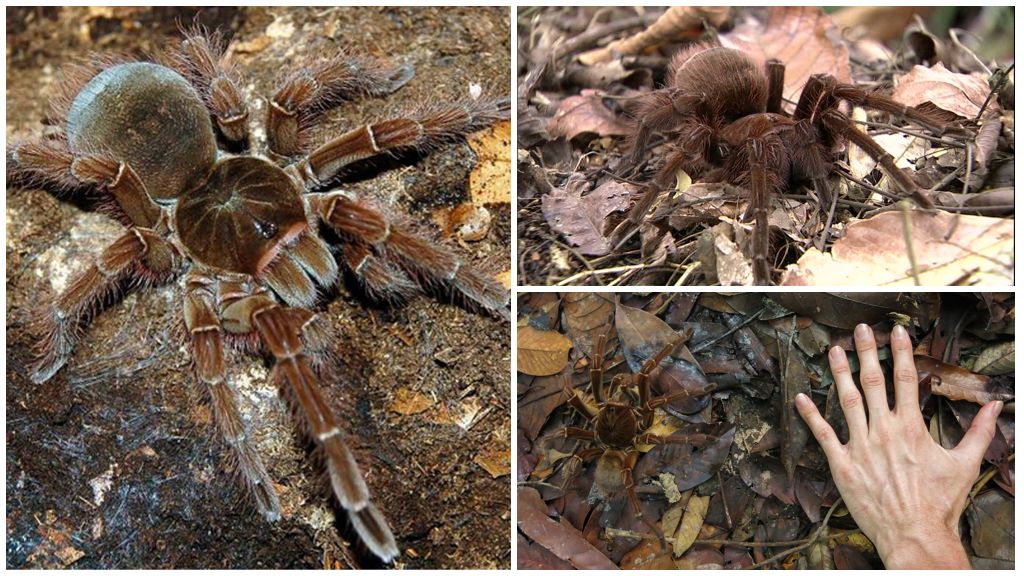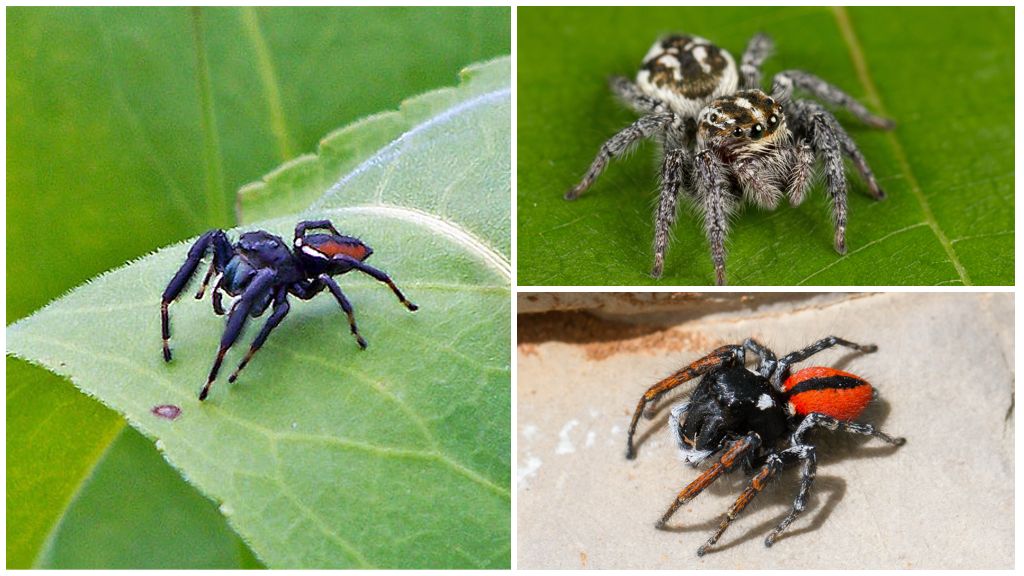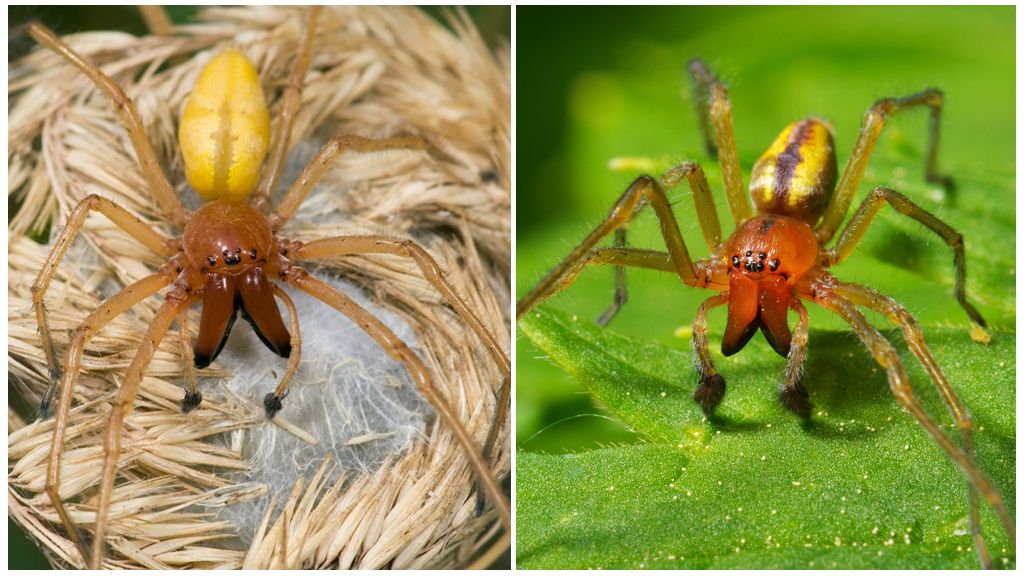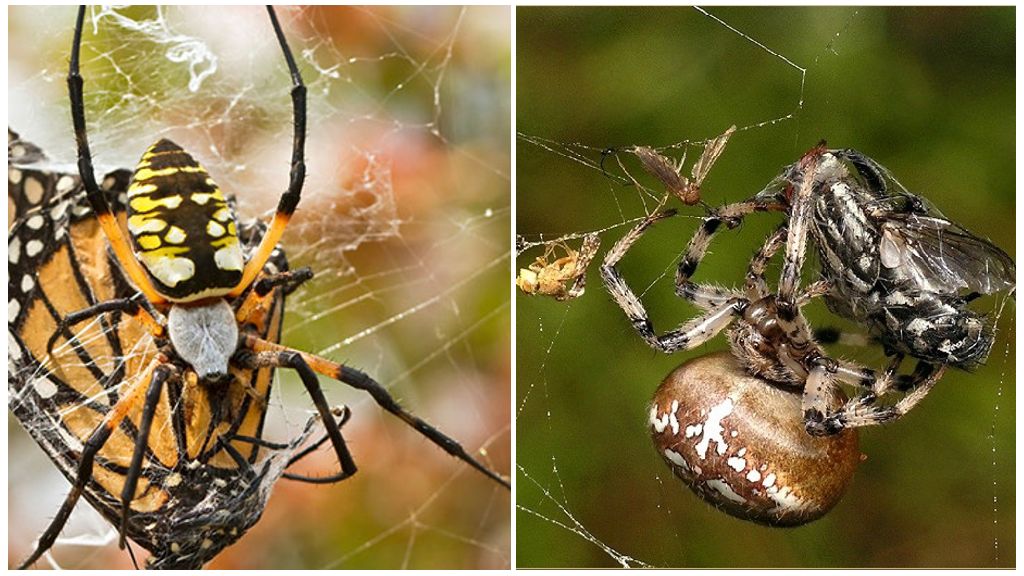- Spider cross
- Types of spiders of the crosses
- Spider cross
The spider cross, he is the crusader, araneus, belongs to the family orbiting - Araneidae. In the genus of crosses, there are 621 species. Spiders live all over the world, distributed in our area. You can meet a predator everywhere - in the forest, on the field, the edge of the forest, park, garden, in the yard, outbuildings. Often creeps into the house through cracks in the wall, open windows, doors.
Description and photo of a spider cross
The body size of females is from 20 to 40 mm, male - 10 mm. Consists of a round convex abdomen, cephalothorax. The body is covered with a strong carapace, legs - with villi. There are 10 limbs of the crusader spider, of which 4 pairs are walking legs. The front ones perform the functions of claws - they capture the victim and are kept in the process of nutrition. The paws are symmetrical to the size of the body. The structure does not differ from the typical arachnid. The cephalothorax is connected to the abdomen with a thin jumper.
How many eyes does a spider have? 8. Are placed on the front of the head. 6 in the center, 2 large on the sides. Such number of eyes provides a broad outlook, but does not provide good vision.
Interesting!
The spider is short-sighted, sees everything in general terms - movement, shadow, silhouette. The sense of smell and touch organs help navigate the space of the cross. Settled on the feet. Once in an unfamiliar place, the spider gently feels the space initially with its paws, and then moves around.
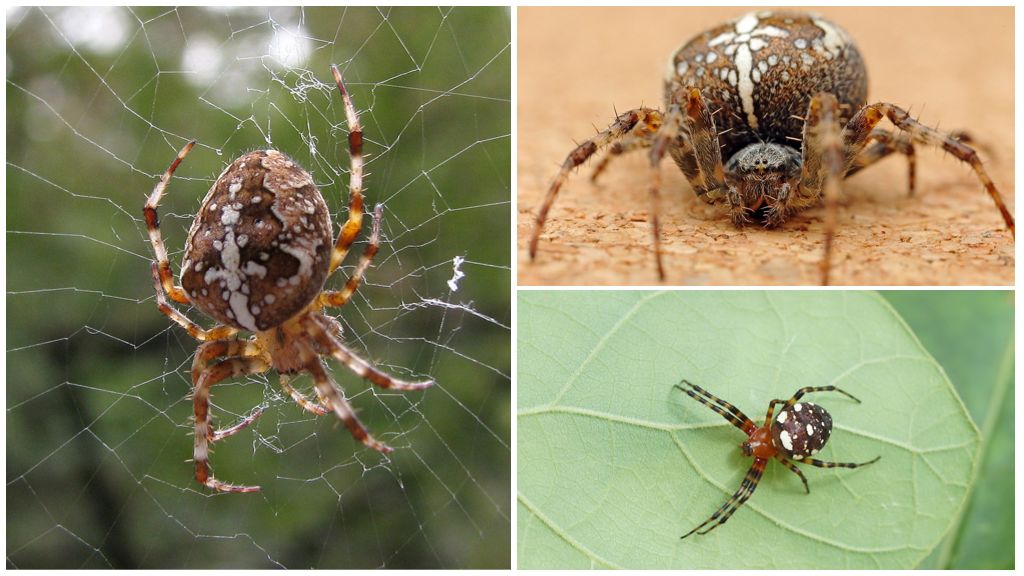
What the crusader looks like depends on the species. The body structure is not different, but the color is different.
- Meadow cross lives in places with humid air, warm climate, dim light. It is painted in brown, yellow, red tones. On the belly from the right side there are white spots in the shape of a cross. Thanks to this mark, all araneus species are called crosses. Meadow predator weaves a web on the grass, preying on small insects.
- Forest cross is different from garden, meadow darker color. The body is dark brown with white stripes. The characteristic white or brown sign of the cross is clearly visible on the abdomen. Paws are long. The largest cross in Russia. The size together with the leg span reaches 4 cm.
- The Far Eastern crosspiece is large. Habitats - forest, field, meadow. Color brown with different shades. The cross on the abdomen is white or yellowish. Weaves the largest web, which reaches 2 m in diameter. Even strong frogs, toads, and snakes can become entangled in strong networks.
- An orange or yellow spider with a cross on its back is an ordinary crusader living in the shady places of a forest, field, meadow, garden. Araneus angulatus is a rare species listed in the Red Book. Body size about 18 mm.
- A predator with a red cross on its back is a type of meadow cross. Bright spots scare away enemies, but do not mean that this representative of the genus is more toxic.
- A black spider with a white cross on its back is a crusader living near swamps, in the forest, in the fields, rarely approaching a person’s house. Outwardly resembles tegenaria.
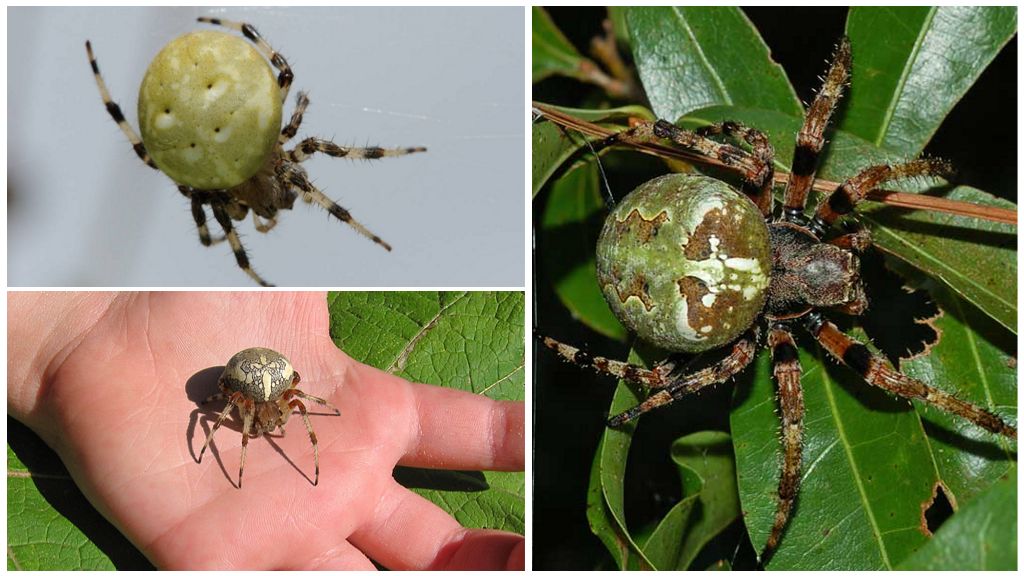
What a cross looks like depends on the species, but distinguishes them from other representatives of arachnids with a characteristic pattern on the back in the shape of a cross. Hence the name came from.
Where dwells
The species is common throughout Europe, some species live in North America.Favorable conditions of existence are increased humidity, high temperature, lack of direct sunlight. Ideal habitats are coniferous forests, swamps, edges, hedges. Less commonly settled in meadows, fields, gardens, vegetable gardens, outbuildings, residential buildings. In Russia, the CIS countries live about 30 species of crosses.
On a note!
Once in a person’s house, the spider selects places away from noise, light. It occupies the corners at the top of the room, below the furniture. Weaves a web. It feeds on "domestic" insects - flies, cockroaches. To get rid of a spider with a cross on its back, it is necessary to remove its cobwebs, throw it out into the street, and poison the “living creatures”.
Lifestyle
Spider ordinary cross - a resident of the wild, but under certain circumstances settles in the house. He leads a nocturnal lifestyle; during the day he sits motionless in a shelter or on a web of web. He weaves it at night. It makes a shelter for itself from the leaves; it builds nets between the branches.
Specialists managed to find out how the female crosshair weaves a web. The network consists of 39 different radii, which expand as they move away from the center, 35 spiral turns, 1245 points of contact of the threads. The radius of the web of the large Far Eastern crosspiece reaches 2 m.
Interesting!
At night, the female weaves a net, during the day a victim is caught in it. The spider eliminates the damaged areas, forms new turns in place. Birds are natural enemies, but their activity decreases with the onset of darkness. The cross can work quietly.
The spider's lifespan is theoretically 2 years. In vivo, it is somewhat shorter. How long a spider cross-stitch lives as a pet depends on the proper care. Quietly live to 2 years.
Nutrition
The main diet consists of insects of different sizes. Flies, wasps, hornets, grasshoppers, locusts, caterpillars, butterflies fall into the spider’s trapping network. In large, solid cobwebs, snakes, frogs, toads, mice get entangled.
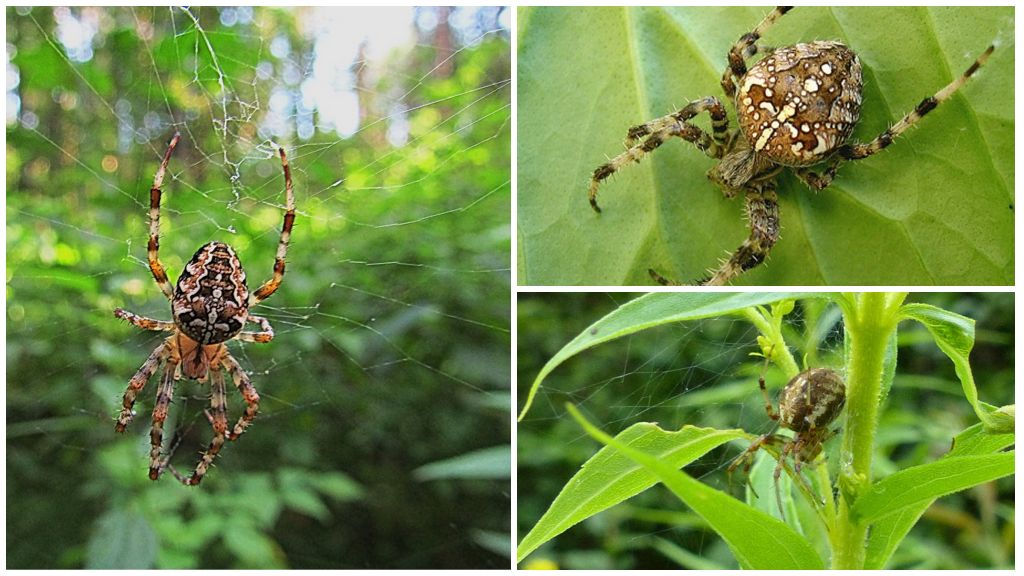
The internal digestive system is absent, liquefaction of food occurs outside. The spider bites the victim, injects poison, which paralyzes the muscles, immobilizes the prey. The cross leads saliva into the body of the insect, wraps itself in cobwebs, and waits for several minutes. In 5-20 minutes, the insides of the victim turn into a liquid mass, which the predator absorbs.
Breeding
The mating season begins in late summer. The female is waiting for the male on his web, feels his approach by the oscillation of the networks. After fertilization, weaves a cocoon, lays up to 250 eggs inside. Carries, then leaves in a secluded place. In this state, young growth winters. Spiders are born in late April.
The growing up period lasts several months. During this time, nymphs molt about 5 times, increase in size, acquire a characteristic color. By the end of summer they become sexually mature. Caterpillars act as food for young animals, aphid.
On a note!
As adult spiders hibernate, they hide in the crevices of walls, utility rooms, forest litter, and tree hollows. They are active with increasing air temperature in the spring.
Poisonous or not crusader
The poison is toxic to invertebrates, vertebrates. It affects rats, mice, humans, rabbits. Sheep, horses, guinea pigs, dogs are resistant to poison. For insects, invertebrates, a crusader attack is fatal. In animals, a temporary deterioration in well-being, external irritation appears.
The crusader is not dangerous to humans. At the sight of people, the spider tries to hide quietly. However, in the event of a threat to one's own life, it may bite. 2 small spots remain on the body. Initially, pain, burning. The next day, suppuration occurs. In people with weakened immune systems, children after spider bite overall health worsens. There is weakness, nausea, headache, dizziness, discomfort in the abdomen.The condition normalizes after a few days.
